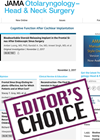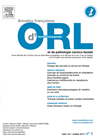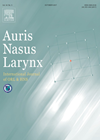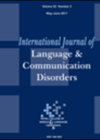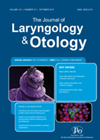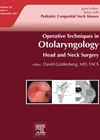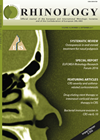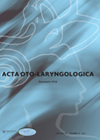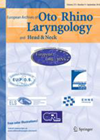
Journal Reviews archive for 2017
“Close” surgical margin in oral tongue redefined, 2.2mm is as good as 5mm
Gold standard treatment of squamous cell carcinoma (SCC) of the oral tongue remains surgical resection of the primary tumour with negative margins. The primary goal is the complete excision of the tumour with no residual cancer cells left behind. A...
Precision medicine in allergic rhinitis and chronic rhinosinusitis
Precision medicine (PM) with its ‘four Ps’ (personalised, predictive, preventive and participatory) is about appreciating differences between individuals when offering management options for health problems. Multiple groups interested in rhinology such as EPOS and ARIA supported a review of the...
Oropharyngeal malignancies
The authors retrospectively reviewed 44 patients who underwent a combined transoral and transcervical treatment without mandibulectomy for oropharyngeal malignancy. The combined approach was performed first by a neck dissection followed by transoral excision of the lesion and reconstruction by a...
Epistaxis and anticoagulants
The French Society of Otorhinolaryngology Head and Neck surgery issued some recommendations on the management of epistaxis in patients receiving anticoagulants, anti-platelet aggregants and anti-vitamin K drugs. This was a national multidisciplinary evidence-based concensus document. The group recommends review of...
Management of stage IV pharyngolaryngeal lesions
This is a retrospective study of 63 patients presenting with stage four laryngeal and/or hypopharyngeal squamous cell carcinoma. The aim was to define the factors influencing the oncological and functional outcomes of the patients. All patients had T4 lesions with...
To monitor the nerves or not?
Whilst intraoperative nerve monitoring has become the standard of care for mastoid and parotid surgery, its benefit in thyroid surgery remains unclear. In the UK NICE was agnostic on the subject in 2008, stating that it was potentially helpful and...
Importance of face-to-face communication in clinical practice
Breakdowns in communication with patients who have difficulty in understanding, speaking or hearing may occur during a consultation. The authors of this paper studied the hearing-related breakdowns in communication especially amongst older adults with hearing impairment (HI) using conversational analysis...
Helicobacter pylori and chronic tonsillitis
Helicobacter pylori infection in the stomach has long been associated with chronic gastritis, duodenal and peptic ulceration and even gastric cancer. Whether laryngopharyngeal reflux (LPR) brings up these organisms and induces chronic tonsillitis is an interesting concept, which the authors...
Radiology and paediatric neck lumps
This is a comprehensive article examining the modalities available for children presenting with suspected congenital neck lumps. Each modality is explained in turn, with pros and cons highlighted, but also in the context of the emergency patient and the elective....
Drug eluting stent vs INCS for CRS
A prospective, randomised study from Finland to compare a drug eluting stent (DES) and intranasal corticosteroids (INCS) in 63 patients as assessed by SNOT-22, VAS, endoscopy, CT and rhinometry pre-treatment, at three and six months post treatment. Recruitment was over...
Which technique is better for turbinate reduction: surgical turbinoplasty or radiofrequency ablation?
Turbinate hypertrophy; radiofrequency; surgical turbinoplasty; visual analogue score
Dutch pharyngeal pouch surgery experience
A decade’s experience of pharyngeal pouch surgery was reported in this paper from Rotterdam. A total of 94 patients were analysed. The majority (80%) underwent an endoscopic approach, either with stapling or CO2 laser-assisted. Interestingly, 13 of 75 (14%) procedures...

